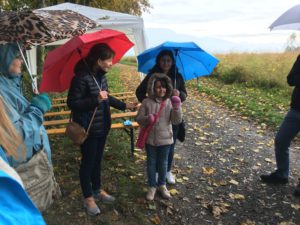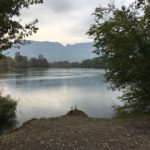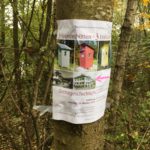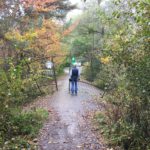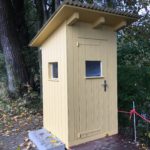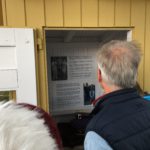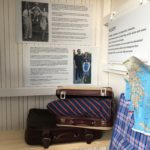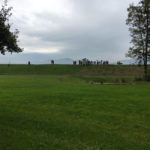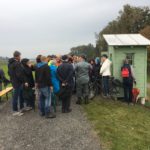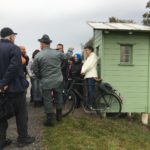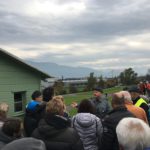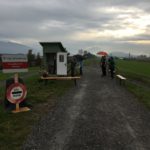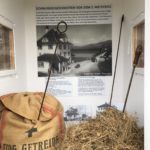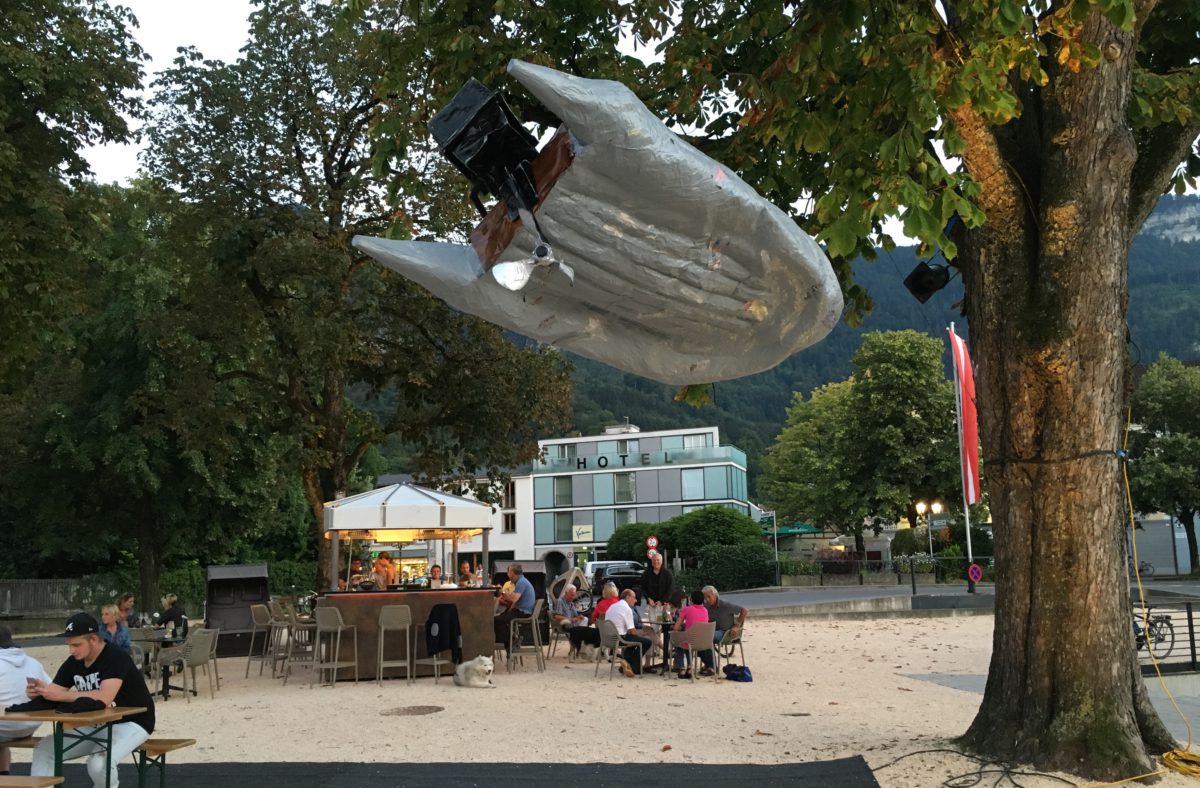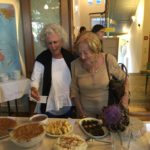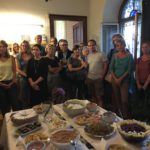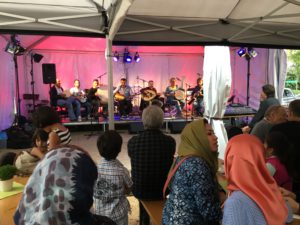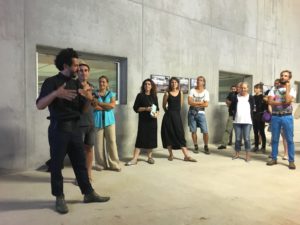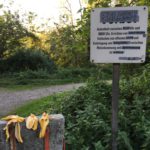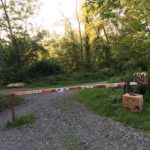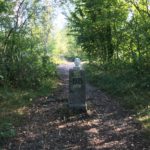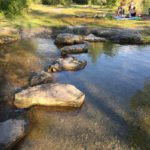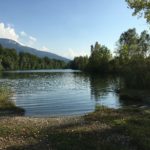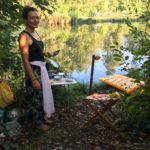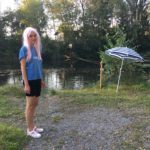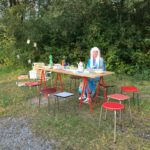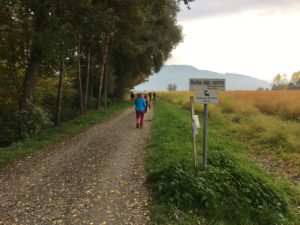
On a rainy October day the border between Austria and Switzerland, more precisely between Lustenau and Diepoldsau, became a hub of curious folks from both sides of the Old Rhine. The association for the protection of nature (at least that’s my guess how to translate the „Naturschutzgruppe“) from Diepoldsau in Switzerland – next to Hohenems – presents a very special kind of outdoor exhibition along the Old and New Rhine. Our friends from Frankfurt are here for the weekend. In the summer we walked along the river Main with them, from the European Central Bank to the new pubs on the banks, where Frankfurt is posh and enjoying itself. The European Central Bank might be the true heart of Europe, but the innocent banks of the river Rhine might be the stomach. So we offered our friends a tour.
Three little cabins, or shelters so to say, that once helped border police to find refuge from rain and snow, are now neatly painted in red, green and yellow – and filled with installations about three subjects that informed the life of this region for many years: smuggle, refugees, and border control. Three perspectives on the same liminal space: the one of the locals, many of them having a story of smugglers in their own family. The one of those who try to find refuge from something more serious than bad weather. And the one of the state, and the young man engaged in what was considered the essence of Swiss sovereignty: the control of its borders.
Thousand of Jewish refugees were seeking a way to freedom here in 1938, some crossed the river where it was shallow. Some sneaked over the bridge in the night. There were many ways here, and nobody knew for sure which one was working, when, and at what time. Some of these refugees had their roots in Hohenems, like Alfred Munk and his sister Gertrud from Vienna, who crossed the border here already in April 1938. But the number of stories one could tell is endless. We’ll work on it, one by one by one.
The little exhibitions inside of the huts are simple and thoughtful, not partisan but emphatic, giving all these conflicting perspective their voice. And leave it to the eye of the beholder to draw conclusions. Who knows wether we are confronting only the past, or some future?
Margit Bartl-Frank, the artist and friend of the museum, living on the Swiss side of the Rhine, made the story of the Jewish refugees already several times a subject of her installations. This time she confronted the account of the Kreutner family, who succeeded to enter Switzerland in the fall of 1938 through Hohenems with the story of the Abdolzaher family from Herat in Afghanistan. Their odyssey lead them by foot through Iran and Turkey, on a boat to Greece, through Macedonia and Italy to France, and finally to Diepoldsau in Switzerland, where they now learn German and seek a job. Faride and her little daughter Setayesh answer questions patiently and stood beside the old border post in the rain. What will be their future? Nobody knows. But many got an idea: it will not only depend on them, but also on us.
Our friends are a bit ahead of us. In Frankfurt they have two kids from Afghanistan at home, giving them shelter and a bit of support for their possible start into a new life. Not easy at all. The boys have to start from scratch, they hardly visited school in their life before. Working on construction sites in Pakistan was their education. Faride might be better off, she was a nurse in a hospital, her daughter already speaks German with a heavy Swiss accent. A little later we see her on her little bike, riding joyfully between the yellow and the green cabin. She seems to be at home in Diepoldsau. Unbelievable.
